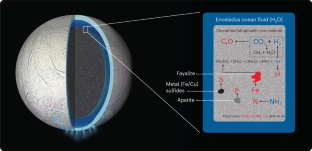2023-12-29 カリフォルニア工科大学(Caltech)
◆特に、エネルギーや栄養素の流れなどが注目され、時間の観点から居住性を特徴づける必要性が指摘されている。このアプローチは、将来のミッションにおいて他の世界の居住性を測定する新たな方向性を提案しており、具体的な例として土星の衛星エンケラドゥスが挙げられている。
<関連情報>
- https://www.caltech.edu/about/news/a-new-way-to-characterize-habitable-planets
- https://www.nature.com/articles/s41550-023-02158-8
地球を超える居住性の維持と比較 Sustained and comparative habitability beyond Earth
Charles S. Cockell,Mark Simons,Julie Castillo-Rogez,Peter M. Higgins,Lisa Kaltenegger,James T. Keane,Erin J. Leonard,Karl L. Mitchell,Ryan S. Park,Scott M. Perl & Steven D. Vance
Nature Astronomy Published:28 December 2023
DOI:https://doi.org/10.1038/s41550-023-02158-8

Abstract
Although we have a reasonable understanding of the physical and chemical conditions required to support the growth and reproduction of organisms, we still have only a rudimentary grasp of the geophysical conditions required to sustain those conditions over geological timescales. We propose that a strengthening of the interface between geophysics and biology is required to quantify sustained habitability and ultimately to mature the science of comparative habitability. Comparative habitability will inform our understanding of the common principles that allow habitability to be sustained on different planetary bodies, and whether habitability is predictable or contingent for a given set of planetary body characteristics. These developments are enabled by missions in our Solar System, including those to icy bodies such as Europa, Enceladus and Titan, in combination with telescopes allowing us to study habitability on exoplanets, thus providing essential insights into processes that can enable sustained habitability. Comparative habitability will help to determine whether Earth is a rare outpost of conditions suitable for a multi-billion-year biosphere, or whether the conditions that allowed for sustained habitability here are common in the Universe.



